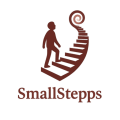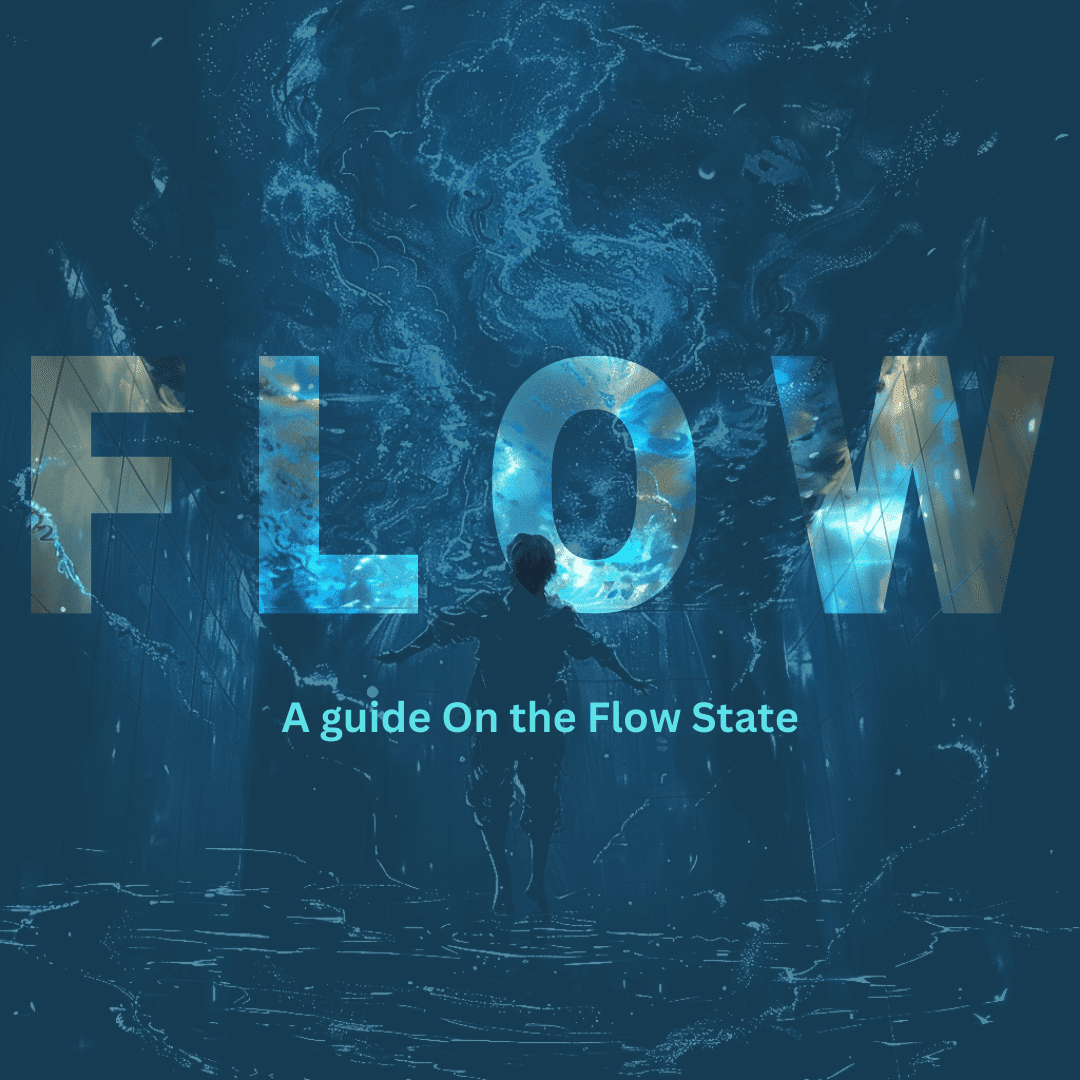A Guide On the Flow State
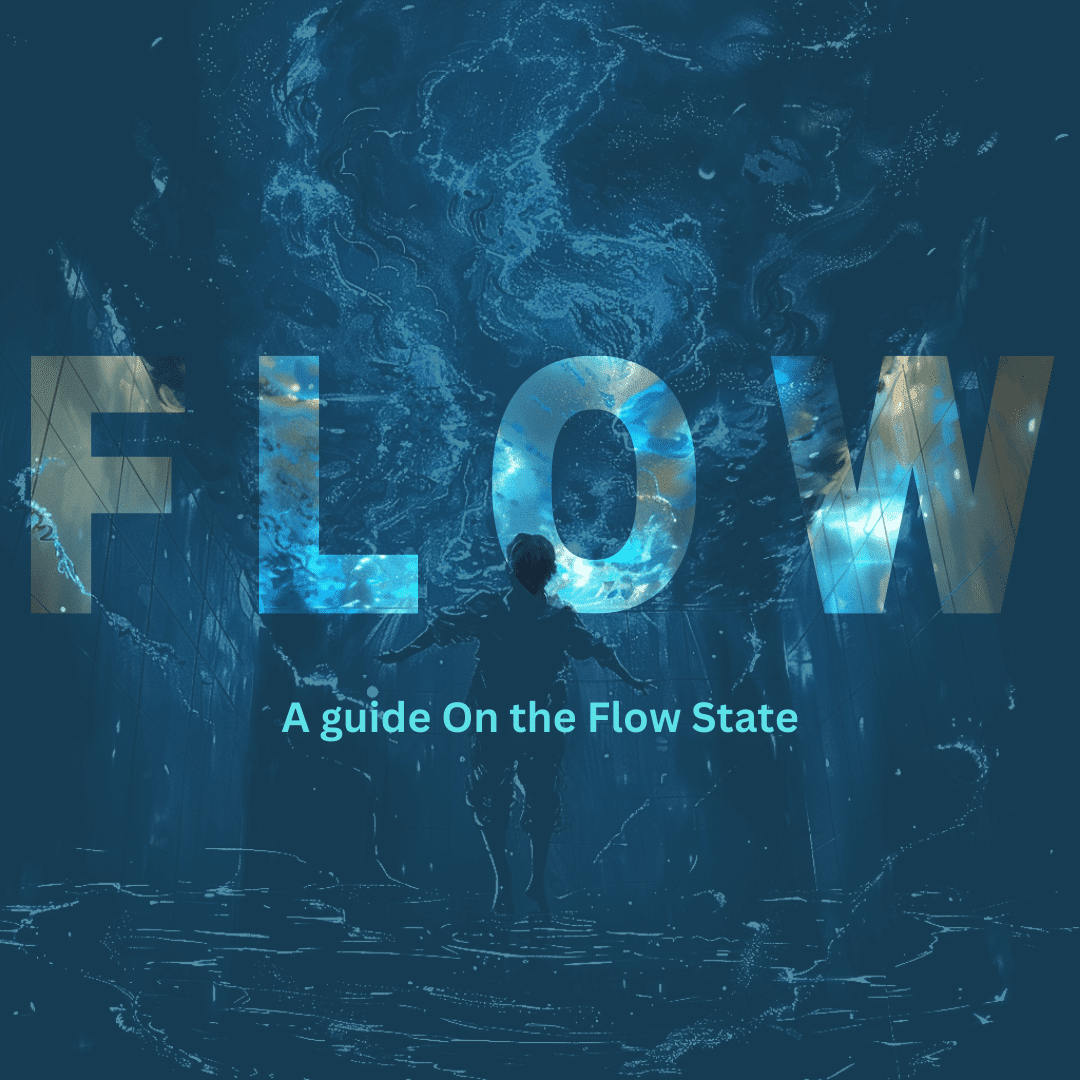
Flow state, often described as being “in the zone,” is a mental state where individuals experience complete immersion and engagement in an activity. This concept, introduced by psychologist Mihaly Csikszentmihalyi, has gained significant attention for its ability to enhance productivity, creativity, and overall well-being. In today’s fast-paced world, achieving a flow state is more important than ever. With constant distractions and an ever-increasing demand for multitasking, finding ways to maintain deep work and mental focus can be a game-changer.
The origins of flow state can be traced back to ancient practices of mindfulness and meditation, where individuals sought to achieve a heightened sense of awareness and presence. However, it was Csikszentmihalyi’s research in the 1970s that brought the concept into the realm of psychology and performance studies. He identified flow as a state where people are so involved in an activity that nothing else seems to matter, and the experience itself is so enjoyable that people will continue to do it even at great cost. In our modern lives, the importance of achieving a flow state cannot be overstated.
Whether you’re an athlete aiming for peak performance, a professional seeking to enhance productivity, or a creative individual looking to unlock new levels of innovation, the ability to enter a state of immersive concentration can significantly impact your success. The benefits of flow extend beyond just productivity; they also include improved mental well-being, reduced stress, and a greater sense of fulfillment.
This blog post aims to provide practical tips and strategies to help you achieve and maintain a flow state, enabling you to reach your highest potential. By understanding the key elements that contribute to flow and implementing techniques to grow this state, you can enhance your performance, focus, and overall quality of life. If you’re looking to improve your cognitive flow, engage in deep work, or simply find more joy in your daily tasks, the insights shared here show you how to achieving a flow state.
The Science Behind Flow
Neurological Aspects
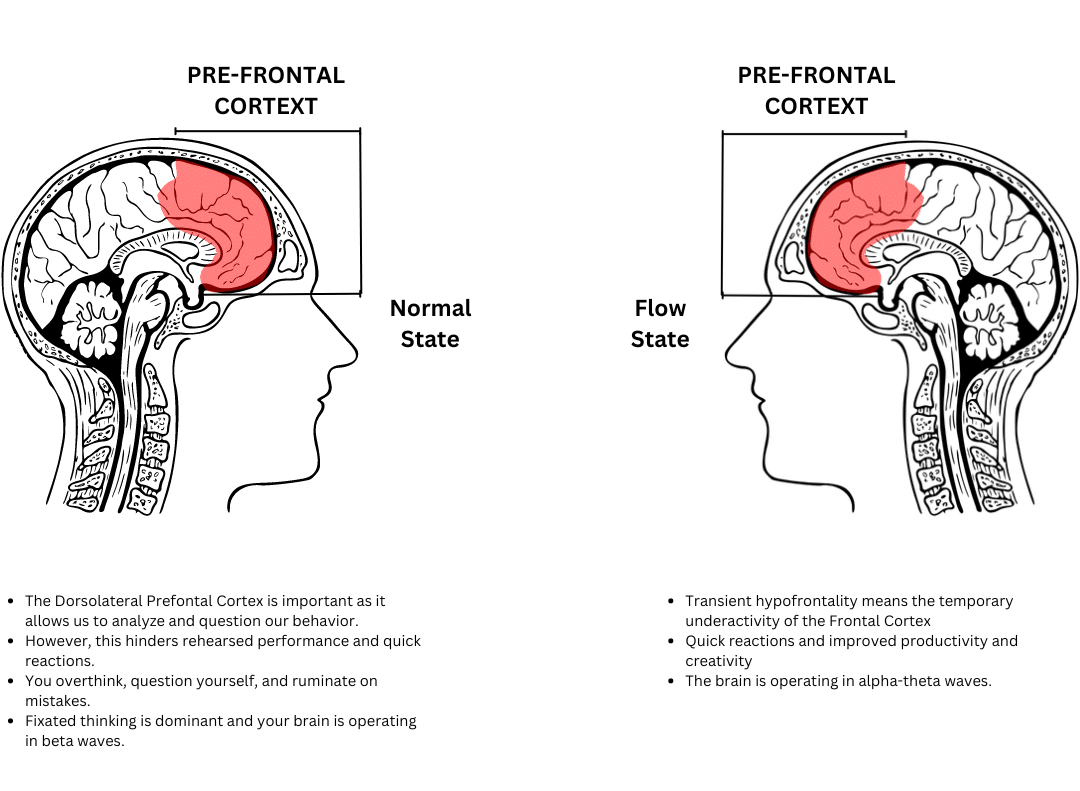
Brain Activity and Neurotransmitters
Achieving a flow state involves complex neurological processes that have been the subject of extensive research. When individuals enter a flow state, their brain activity undergoes significant changes, particularly in areas associated with focus, motivation, and reward.
One of the key aspects of flow is the balance between the prefrontal cortex and the limbic system. The prefrontal cortex, responsible for higher-order thinking and decision-making, temporarily downregulates, allowing for a more seamless and intuitive performance. This phenomenon, known as “transient hypofrontality,” enables individuals to experience effortless attention and heightened creativity.
Neurotransmitters also play a crucial role in facilitating flow. Dopamine, often referred to as the “feel-good” neurotransmitter, is released in higher quantities during flow states, contributing to feelings of pleasure and motivation. Additionally, norepinephrine and endorphins are released, enhancing focus and reducing the perception of pain or discomfort. These chemical changes create a state of hyperfocus, where individuals can maintain deep work for extended periods.
Research Studies and Findings
Research studies have provided valuable insights into the neurological underpinnings of flow. Functional MRI (fMRI) scans have shown that during flow, there is increased activity in the brain’s reward circuitry, including the nucleus accumbens and the ventral tegmental area.
These findings suggest that flow is not only a state of heightened performance but also one of intrinsic reward and satisfaction. Key scientists like Mihaly Csikszentmihalyi and Steven Kotler have made significant contributions to our understanding of flow, highlighting its potential to transform how we approach work, creativity, and personal fulfillment.
Psychological Components
Theories and Models
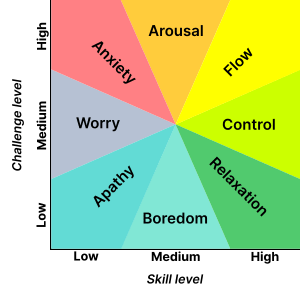
The psychological components of flow are equally important in understanding how this state is achieved and maintained. Theories and models developed by psychologists provide a framework for identifying the conditions that contribute to flow.
Csikszentmihalyi’s flow model, for instance, outlines eight characteristics of flow, including clear goals, immediate feedback, and a balance between challenge and skill. These elements create an environment where individuals can fully immerse themselves in an activity, leading to an optimal experience.
Mental States Associated With Flow
Mental states associated with flow include a sense of control, loss of self-consciousness, and a distortion of time perception. When in flow, individuals often report feeling as though time either speeds up or slows down, allowing them to remain deeply engaged in the task at hand. This state of engaged focus is crucial for achieving peak performance, as it minimizes distractions and maximizes efficiency.
The emotional impacts of flow are profound, contributing to overall well-being and life satisfaction. Flow experiences are often described as intrinsically rewarding, providing a sense of accomplishment and fulfillment. This positive emotional state can reduce stress and anxiety, promoting mental health and resilience.
By understanding the psychological components of flow, individuals can create conditions that enhance their ability to enter and sustain this state, leading to a more productive mindset and a greater sense of purpose.
Interconnections Between Mind and Body
Body’s Response to Flow
The interconnections between mind and body play a significant role in achieving flow. When individuals enter a flow state, their physical responses align with their cognitive engagement, creating a harmonious experience. The body’s response to flow includes physiological changes such as reduced heart rate variability and increased coherence in heart rhythms. These changes indicate a state of relaxation and focus, allowing individuals to perform at their best without experiencing undue stress or fatigue.
Harmony Between Cognitive and Physical Engagement
The harmony between cognitive and physical engagement is particularly evident in activities that require both mental and physical effort, such as sports, dance, and musical performance. Athletes, for example, often describe being in a “zone of genius” where their movements feel effortless and automatic. This state of task absorption allows them to execute complex actions with precision and grace, leading to peak performance. Understanding the interconnections between mind and body can help individuals cultivate a state of mindful productivity.
Techniques such as mindfulness meditation, deep breathing exercises, and physical conditioning can enhance one’s ability to enter flow by promoting relaxation and focus. By a cultivating a strong mind-body connection, individuals can create an environment conducive to flow, enabling them to achieve their highest potential in both personal and professional endeavors.
In summary, the science behind flow encompasses neurological, psychological, and physiological components that work together to create a state of optimal experience. By understanding these elements, individuals can develop strategies to achieve and maintain flow, leading to enhanced performance, creativity, and well-being.
Benefits of Achieving Flow
Personal Benefits

Enhanced Creativity
Achieving a flow state offers numerous personal benefits that can significantly enhance one’s quality of life. One of the most notable advantages is enhanced creativity. When individuals enter a state of creative flow, they often find themselves generating innovative ideas and solutions with ease. This heightened level of creativity is not only beneficial for artistic endeavors but also for problem-solving in everyday life. The ability to think outside the box and approach challenges from new angles can lead to more effective and satisfying outcomes.
Increased Satisfaction and Happiness
In addition to boosting creativity, flow also contributes to increased satisfaction and happiness. The immersive concentration experienced during flow allows individuals to become fully absorbed in their activities, leading to a sense of accomplishment and fulfillment. This state of engaged focus can make even mundane tasks more enjoyable, transforming them into opportunities for personal growth and development. The intrinsic rewards associated with flow, such as feelings of joy and contentment, can enhance overall well-being and life satisfaction.
Improved Mental Health
Improved mental health is another significant benefit of achieving flow. The deep work and mental focus required to enter a flow state can help reduce stress and anxiety by providing a sense of control and purpose. Engaging in activities that promote flow can also serve as a form of mindfulness, allowing individuals to be present in the moment and disconnect from external pressures. This mindful productivity can lead to better emotional regulation and resilience, contributing to long-term mental health and stability.
Professional Advantages
Boosted Productivity and Efficiency
The professional advantages of achieving flow are equally compelling. One of the most immediate benefits is boosted productivity and efficiency. When individuals enter a flow state, they can maintain a high level of focus and concentration, allowing them to complete tasks more quickly and effectively. This hyperfocus state minimizes distractions and interruptions, enabling individuals to achieve peak performance in their work. The ability to sustain deep work for extended periods can lead to significant improvements in output and quality.
Greater Career Fulfillment
Greater career fulfillment is another key advantage of achieving flow in a professional context. When individuals are able to engage fully in their work and experience a sense of purpose and accomplishment, they are more likely to find satisfaction in their careers. This sense of fulfillment can lead to increased motivation and commitment, driving individuals to pursue their goals with greater determination and enthusiasm. The positive emotions associated with flow can also enhance job satisfaction and reduce burnout, contributing to long-term career success.
Enhanced Problem Solving Skills
Enhanced problem-solving skills are another important benefit of achieving flow in the workplace. The cognitive flow experienced during flow states allows individuals to approach challenges with a clear and focused mind, enabling them to identify and implement effective solutions. This heightened level of cognitive engagement can lead to more innovative and strategic thinking, making individuals more valuable assets to their organizations. The ability to solve complex problems efficiently and effectively can also open up new opportunities for career advancement and professional growth.
Examples and Potential Impacts
Success In Various Fields
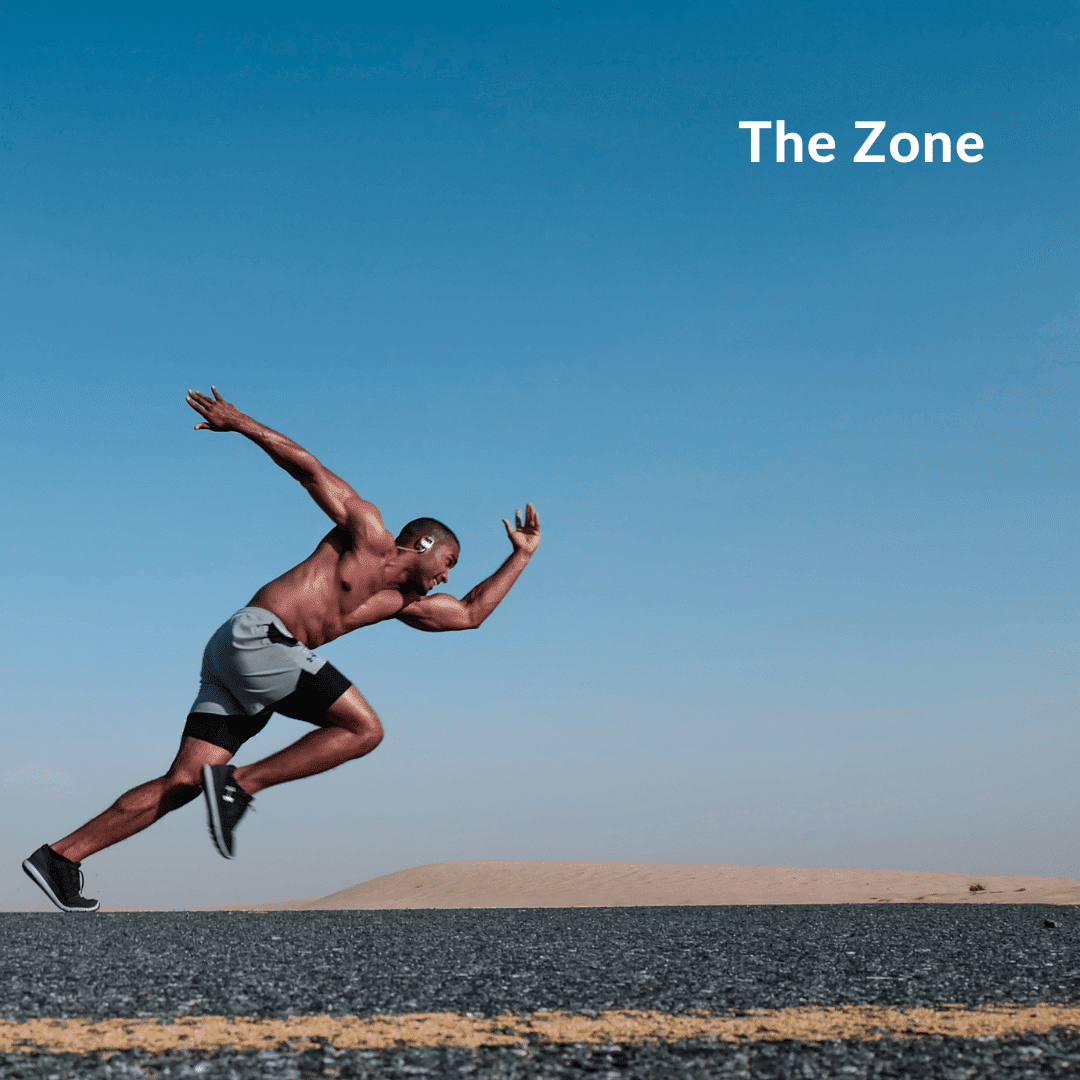
The benefits of achieving flow are evident in numerous success stories from various fields. For example, athletes often describe being in a performance zone where their movements feel effortless and automatic, leading to peak performance in their sports. This state of task absorption allows them to execute complex actions with precision and grace, resulting in outstanding achievements and records.
Similarly, artists and musicians frequently experience creative flow, enabling them to produce works of art that resonate deeply with audiences and stand the test of time. A 10-year study conducted by McKinsey stated if you increase the time spent in flow by 15-20%, the overall workplace productivity would almost double. Companies that create an environment that promotes flow will be better positioned to attract and retain top talent, as well as output incredible results.
The long-term positive changes associated with achieving flow extend beyond individual and organizational benefits. On a societal level, promoting flow can lead to a more engaged and fulfilled population, contributing to overall well-being and prosperity. By understanding and harnessing the power of flow, individuals and organizations can create environments that support optimal experience and performance, leading to a brighter and more productive future.
In summary, the benefits of achieving flow are far-reaching and multifaceted. From enhanced creativity and mental health to boosted productivity and career fulfillment, the advantages of flow can transform both personal and professional lives. By recognizing the potential impacts of flow and implementing strategies to achieve this state, individuals and organizations can unlock new levels of success and well-being.
How to Achieve Flow
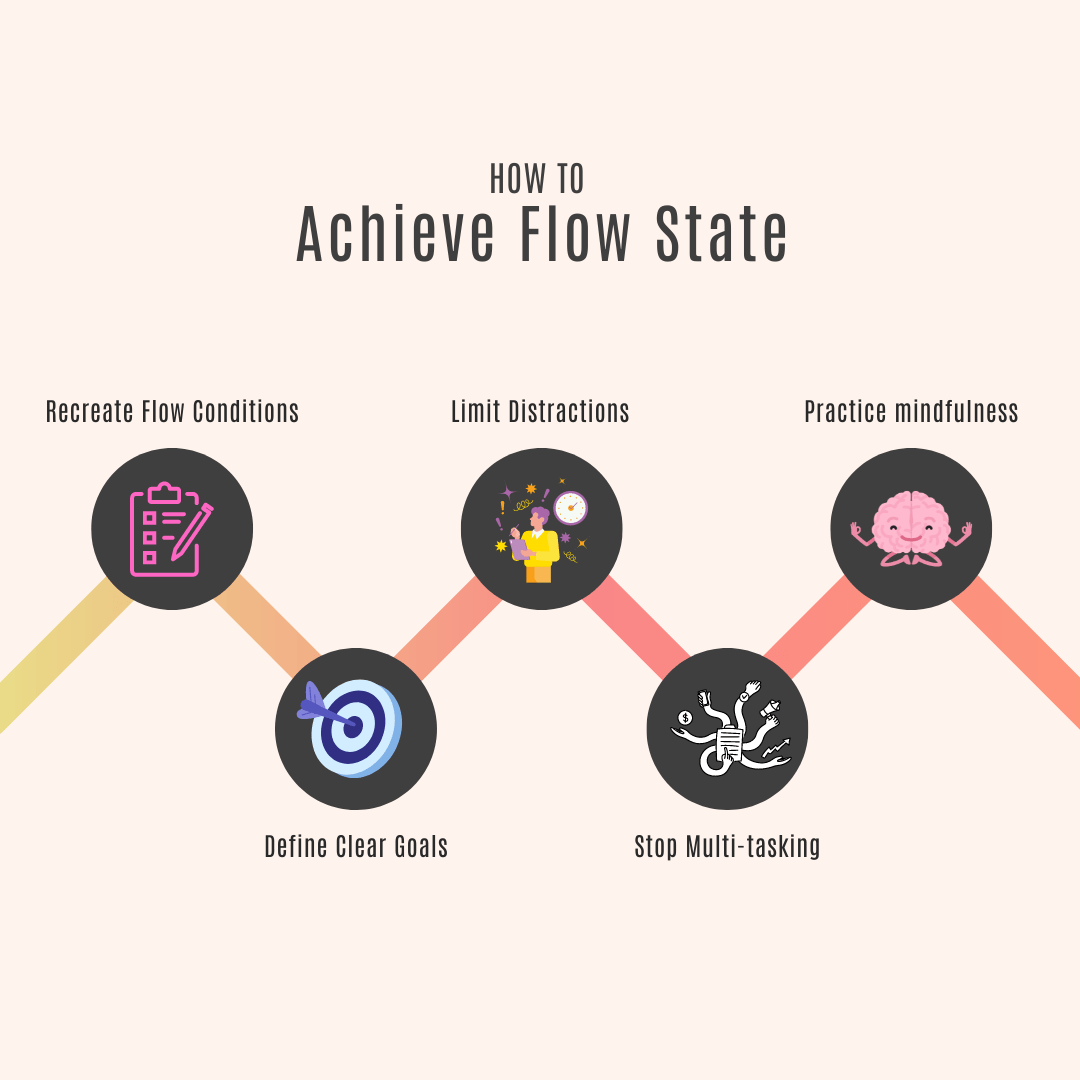
Recognizing Flow Triggers
Identifying Personal Triggers
Achieving a flow state begins with recognizing the triggers that facilitate this optimal experience. Personal triggers can vary widely from one individual to another, but they often include activities that align with one’s interests and strengths. Identifying these personal triggers involves introspection and self-awareness. Reflect on past experiences where you felt deeply engaged and lost track of time. What were you doing? What conditions were present? Understanding these elements can help you recreate similar conditions to enter a flow state more consistently.
Environmental Factors
Environmental factors also play a crucial role in achieving flow. A conducive environment minimizes distractions and promotes immersive concentration. This might involve creating a dedicated workspace, using noise-canceling headphones, or setting specific times for uninterrupted work. The physical setup of your environment can significantly impact your ability to maintain mental focus and enter a state of deep work. Additionally, consider the social environment; supportive colleagues or a collaborative atmosphere can enhance your ability to achieve flow.
Timing and Routine
Timing and routine are other critical factors in recognizing flow triggers. Many people find that they are more likely to enter a flow state at certain times of the day. For instance, some individuals experience peak performance in the morning, while others find their creative flow in the evening. Establishing a routine that aligns with your natural rhythms can make it easier to achieve and sustain flow. Consistency in your schedule helps condition your mind and body to enter a state of engaged focus more readily.
Balancing Challenges with Skills
Setting Appropriate Difficulty Levels
One of the key principles of achieving flow is balancing challenges with skills. The activities you engage in should be challenging enough to keep you interested but not so difficult that they cause anxiety. Setting appropriate difficulty levels is essential for maintaining a productive mindset. If a task is too easy, you may become bored and disengaged. Conversely, if it’s too difficult, you may feel overwhelmed and stressed. Striking the right balance ensures that you remain in the performance zone, where you can perform at your best.
Continuous Learning and Improvement
Continuous learning and improvement are vital for maintaining this balance. As you develop new skills and gain more experience, the challenges you face should evolve accordingly. This ongoing process of growth keeps you engaged and prevents stagnation. Seek opportunities for professional development, take on new projects, and push your boundaries to keep your skills sharp and your mind engaged. This approach not only helps you achieve flow but also contributes to long-term career fulfillment and personal growth.
Avoiding Boredom and Anxiety
Avoiding boredom and anxiety is crucial for sustaining flow. When you find yourself losing interest in a task, it may be a sign that the challenge level needs to be adjusted. Similarly, if you feel anxious or stressed, the task may be too demanding. Regularly assess your workload and make adjustments as needed to maintain the right level of challenge. This dynamic approach ensures that you remain in a state of cognitive flow, where you can perform at your highest potential.
Setting Goals That Facilitate Flow
Clear and Achievable Objectives
Setting clear, achievable objectives is another essential strategy for achieving flow. Goals provide direction and purpose, helping you stay focused and motivated. When setting goals, ensure they are specific, measurable, and attainable. Clear objectives make it easier to track your progress and stay on course, contributing to a sense of accomplishment and satisfaction. Break down larger goals into smaller, manageable tasks to maintain a steady flow of progress and avoid feeling overwhelmed.
Focus On the Process Over the Outcome
Focusing on the process rather than the outcome is also important for achieving flow. While it’s natural to have end goals in mind, placing too much emphasis on the outcome can create pressure and anxiety. Instead, concentrate on the steps and actions required to reach your goals. This process-oriented approach allows you to immerse yourself fully in the task at hand, promoting a state of effortless attention and engaged focus. By enjoying the journey, you are more likely to achieve a state of mindful productivity.
Regular Assessment and Adjustment
Regular assessment and adjustment of your goals are necessary to maintain flow. As you progress, take time to evaluate your achievements and make any necessary changes to your objectives. This ongoing process of reflection and adaptation ensures that your goals remain relevant and challenging. It also helps you stay aligned with your personal and professional aspirations, contributing to long-term success and fulfillment.
By setting and adjusting goals that facilitate flow, you create a roadmap for sustained peak performance and optimal experience. In summary, achieving flow involves recognizing personal and environmental triggers, balancing challenges with skills, and setting clear, process-oriented goals. By understanding and implementing these strategies, you can create conditions that promote flow, leading to enhanced performance, creativity, and well-being.
Whether in personal pursuits or professional endeavors, the ability to achieve and sustain flow can transform your approach to work and life, unlocking new levels of success and satisfaction.
Conclusion
Achieving a flow state is not just a lofty ideal but a practical and attainable goal that can significantly enhance your personal and professional life. The benefits of flow, from heightened creativity and mental focus to improved productivity and overall well-being, are too compelling to ignore.
By understanding the science behind flow, recognizing your personal triggers, balancing challenges with your skills, and setting clear, process-oriented goals, you can create the conditions necessary to enter and sustain this optimal state. Motivating yourself to pursue flow begins with recognizing its transformative potential. Imagine a life where you can consistently perform at your peak, experience deep satisfaction in your work, and maintain a balanced, stress-free mindset.
The pursuit of flow is a journey toward becoming the best version of yourself, capable of achieving remarkable feats and finding joy in the process. Whether you’re an athlete aiming for the performance zone, a professional seeking a productive mindset, or a creative individual looking to unlock your zone of genius, the principles of flow can guide you toward your goals. To maintain motivation, start by setting small, achievable milestones that lead to larger objectives.
Celebrate your progress and use each success as a stepping stone to further achievements. Surround yourself with supportive individuals who understand the value of flow and can encourage you. Remember, the pursuit of flow is not about perfection but about continuous improvement and personal growth. By staying committed to this path, you can unlock new levels of performance and fulfillment.
For those interested in exploring deeper insights and related resources, there is a wealth of information available on the subject of flow. Books like Mihaly Csikszentmihalyi’s “Flow: The Psychology of Optimal Experience” and Steven Kotler’s “The Rise of Superman” offer in-depth analyses and practical advice on achieving flow.
